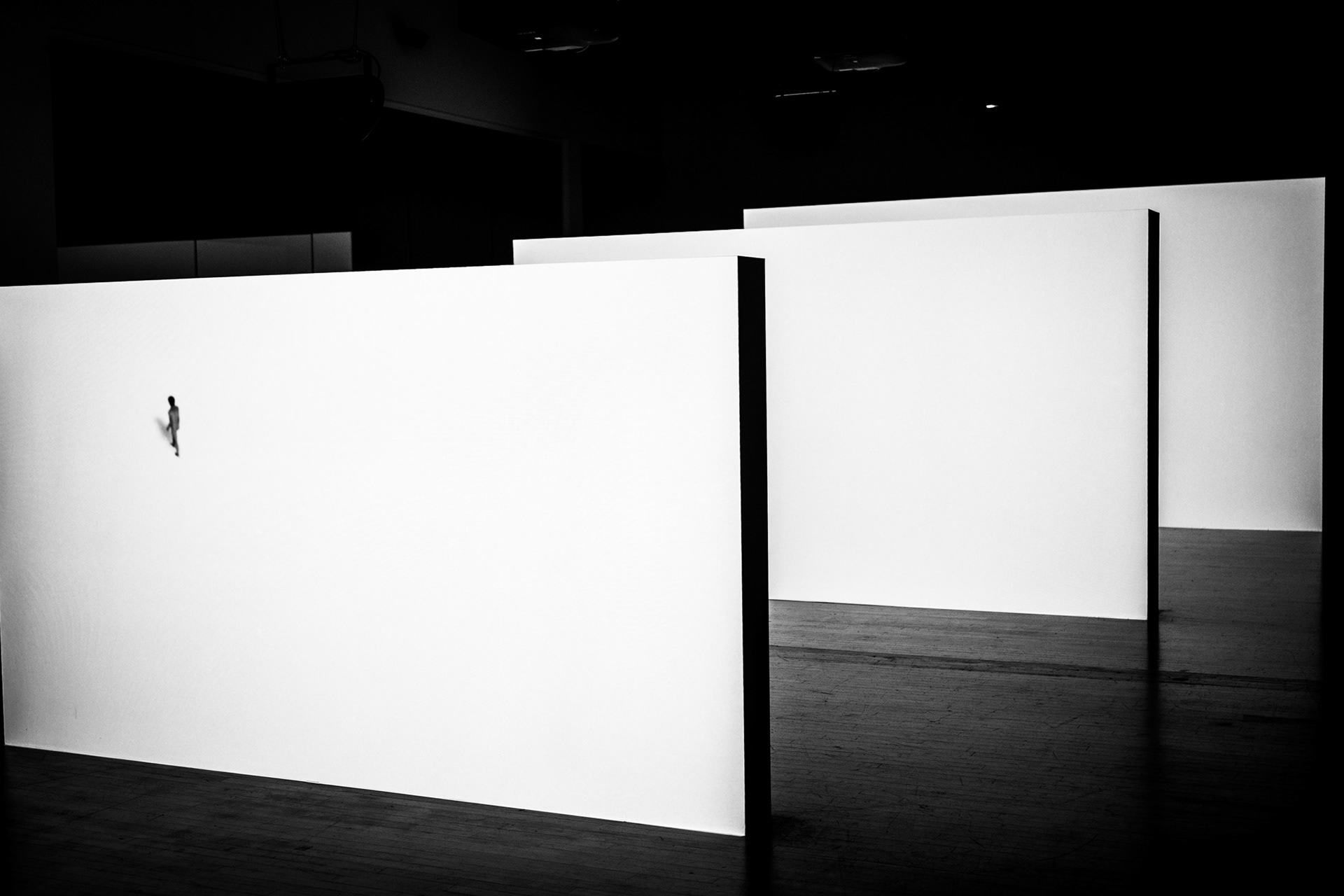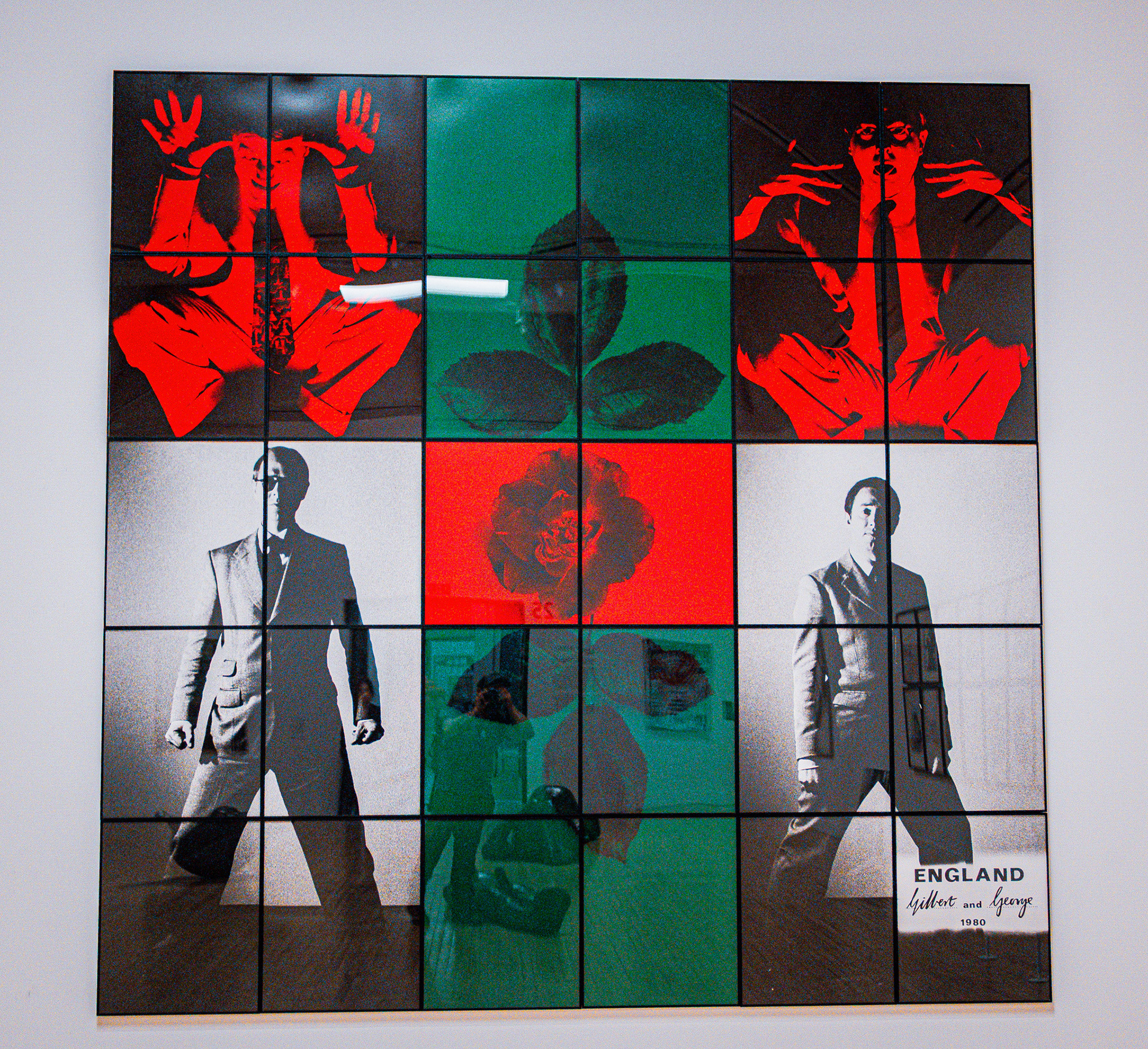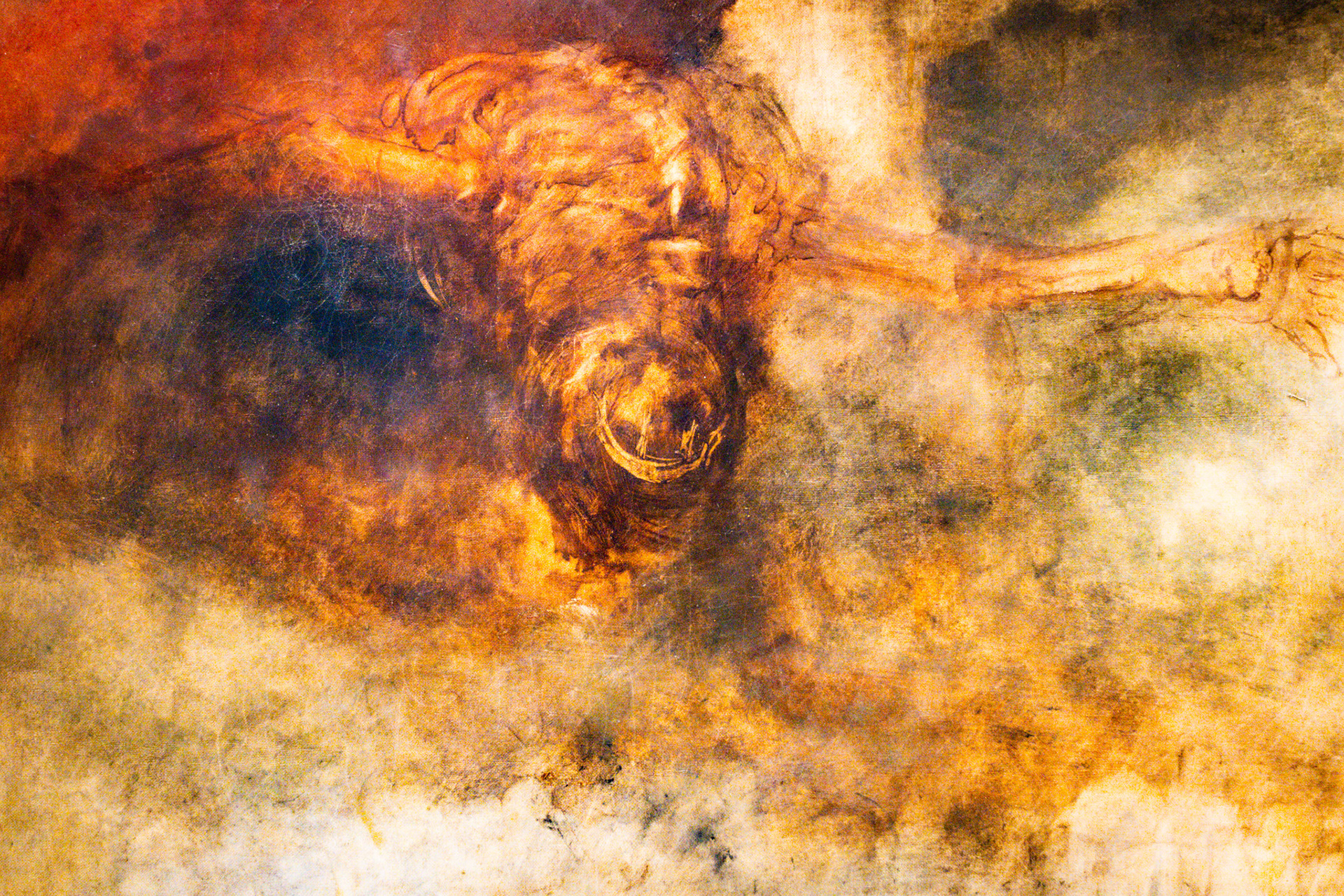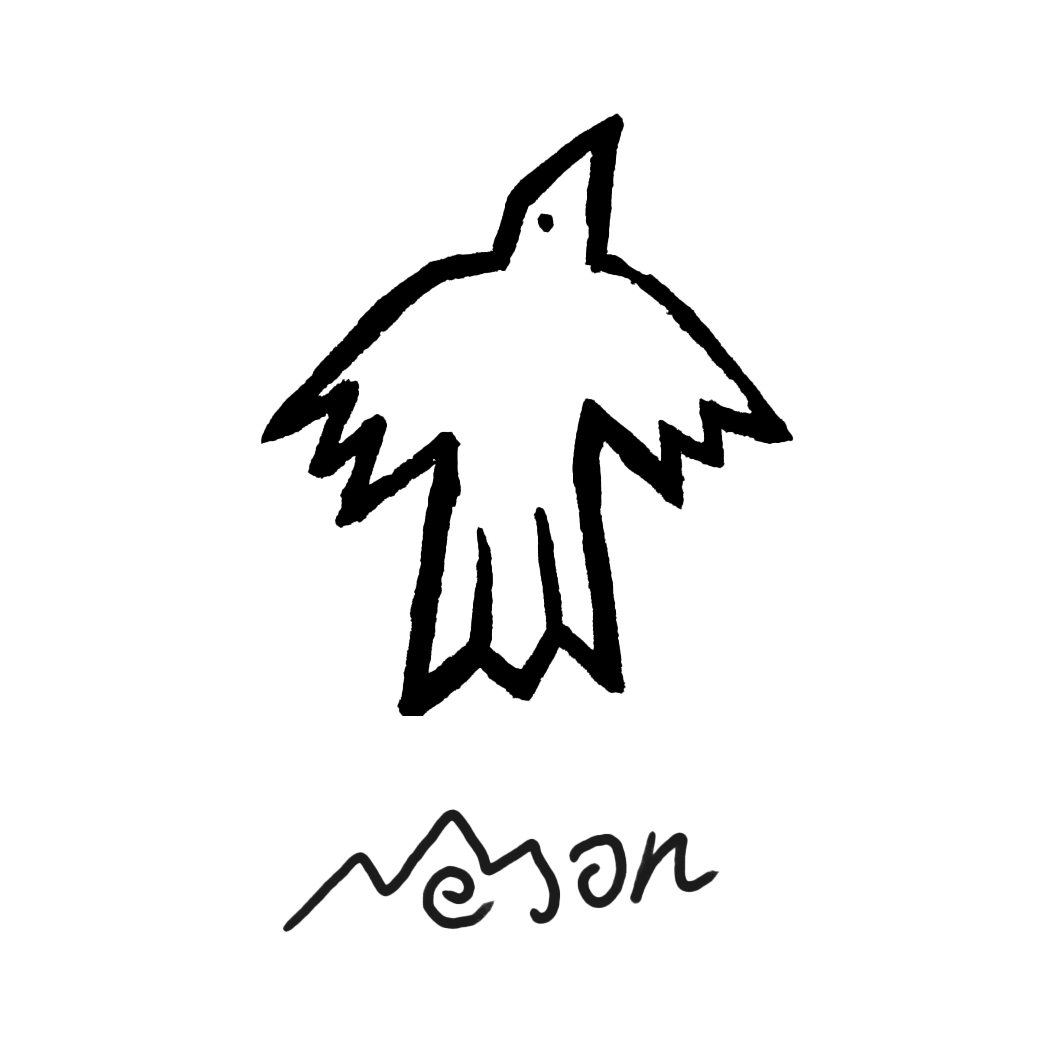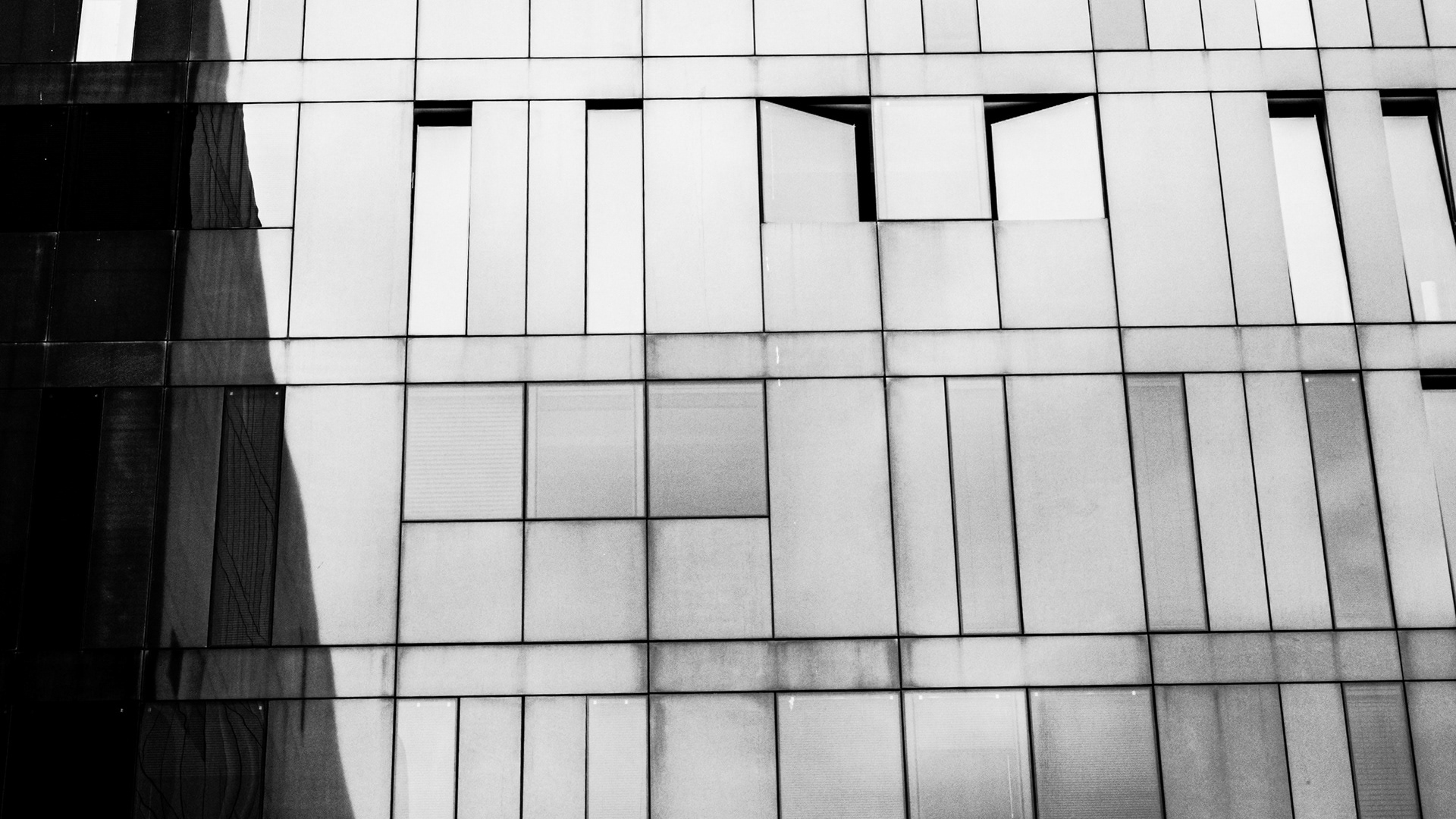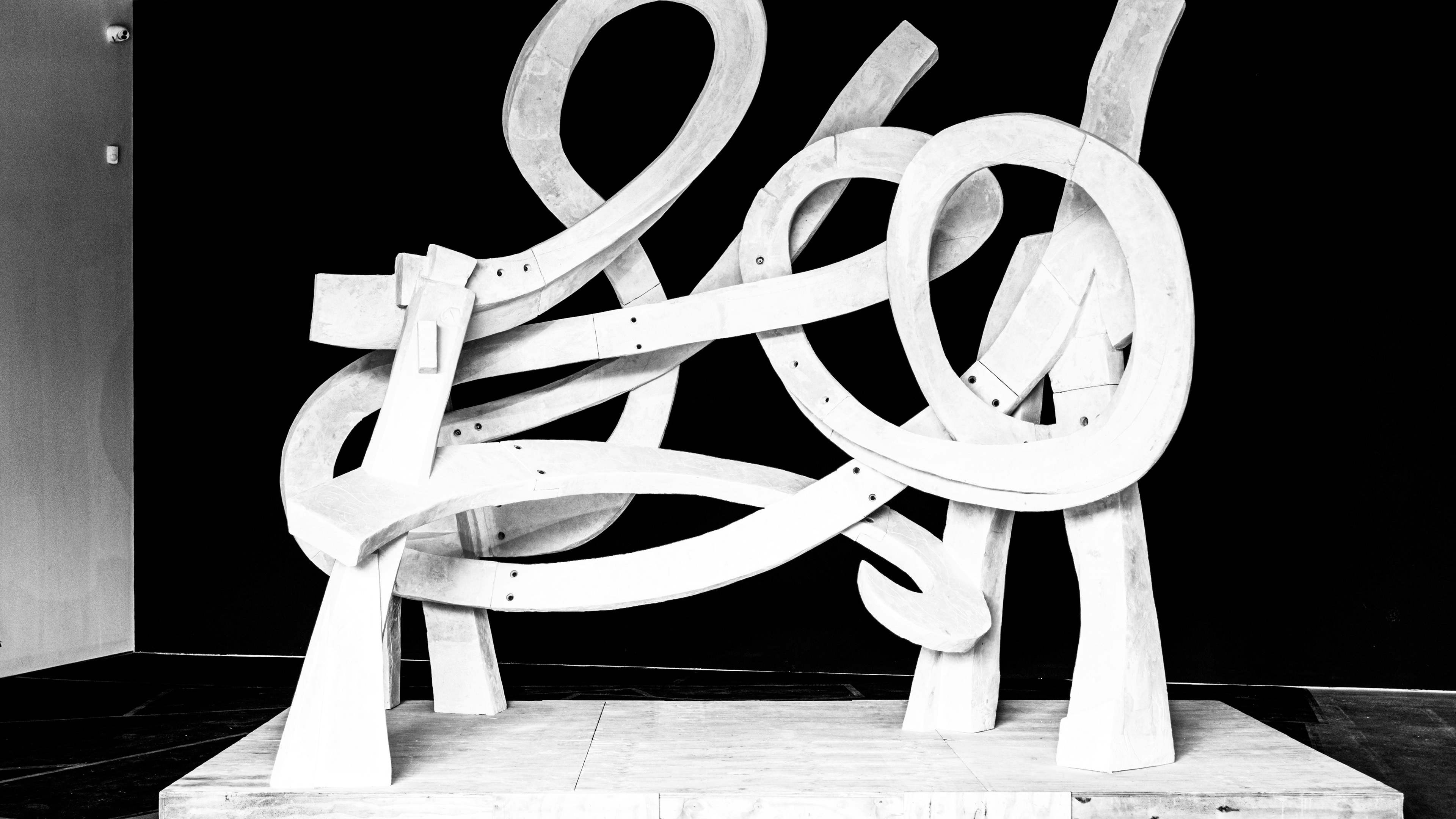April 28th began with an early start and surprisingly warm weather. I arrived at Bangor Train Station to meet up with my Fine Art peers for our journey to London. Unfortunately, our original train was cancelled due to staffing issues, but we managed to catch the next one, with a change at Chester before continuing to Euston Station in London.
For some of us, it was our very first time in the capital—an exciting and unforgettable experience. After arriving, we took the Underground and made our way toward the Tate Modern.
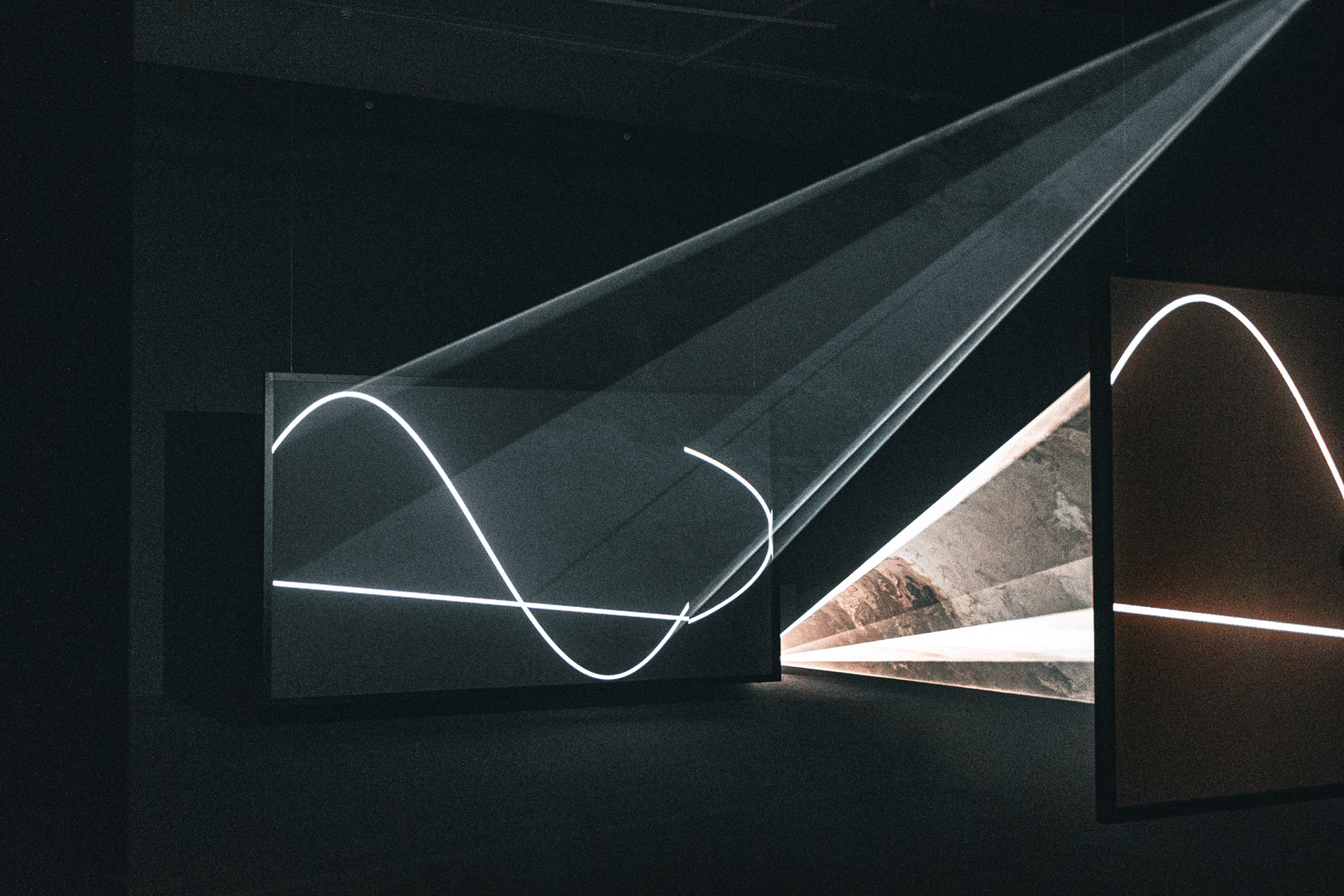
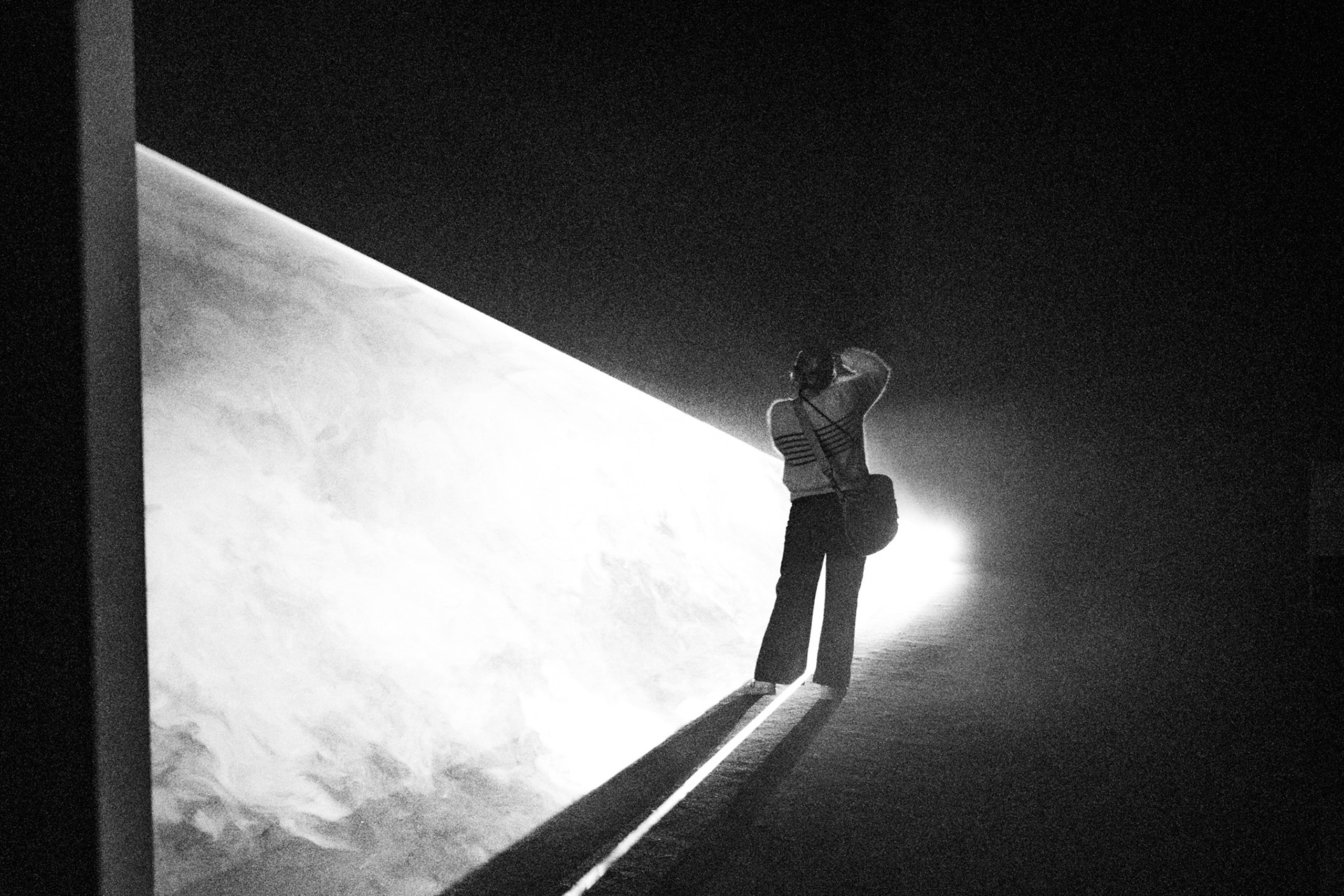
After arriving in London and making our way to the Tate Modern, our group of Fine Art students split up to explore the gallery at our own pace. I was particularly eager to visit the fourth floor, where I knew I’d find work by Mark Bradford, an American artist whose large-scale, textured pieces I deeply admire.
I was also excited to see iconic works by Roy Lichtenstein, Andy Warhol, and Martin Kippenberger—artists whose approaches to print and graphic art resonate with my own creative practice. Their bold use of imagery, text, and media continues to inspire my exploration of print and graphic-based work.
I discovered Salvador Dalí’s Lobster Telephone. Quirky, surreal, and unmistakably Dali, it was a fun and unexpected moment from the master of surrealism that brought a smile to my face.
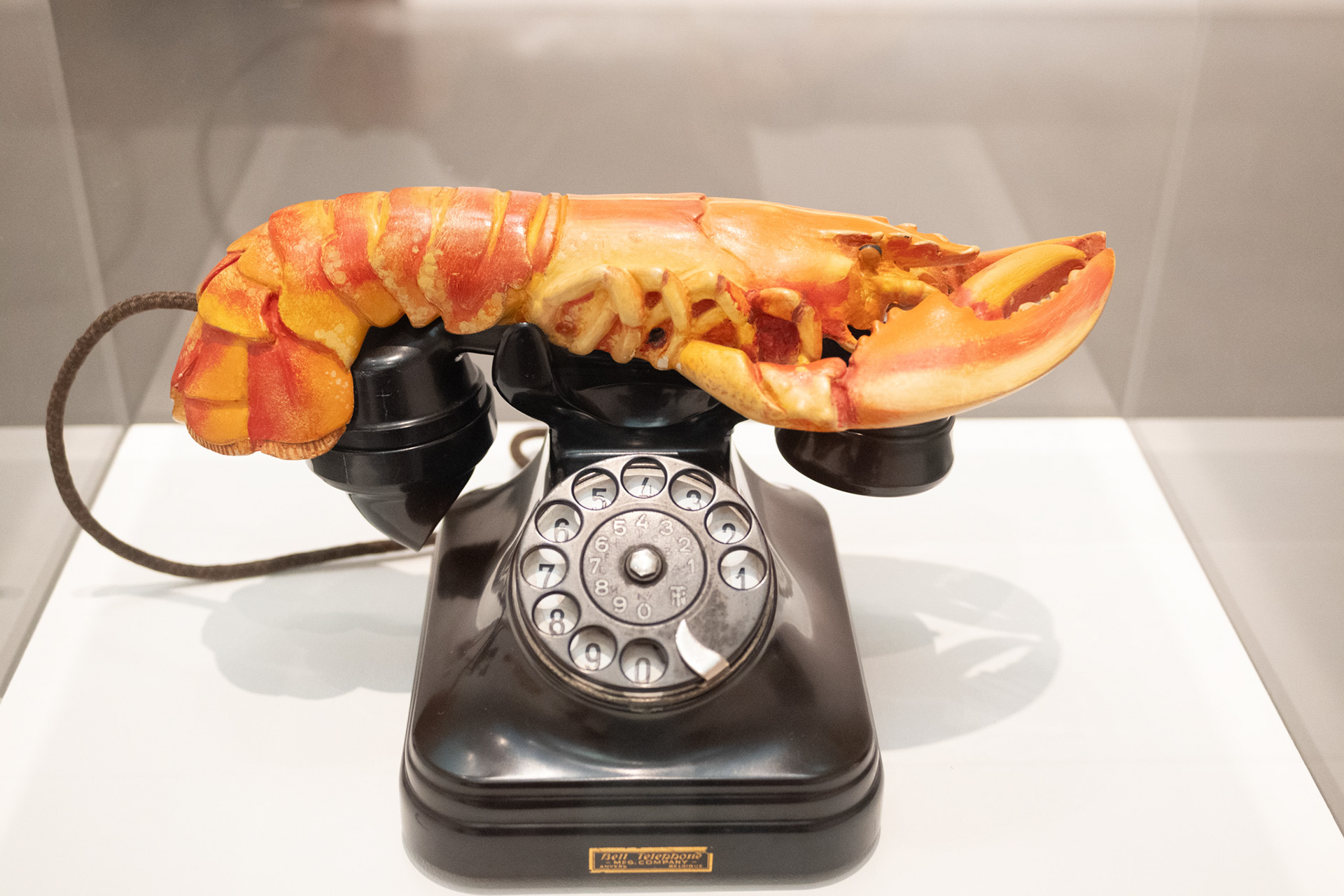
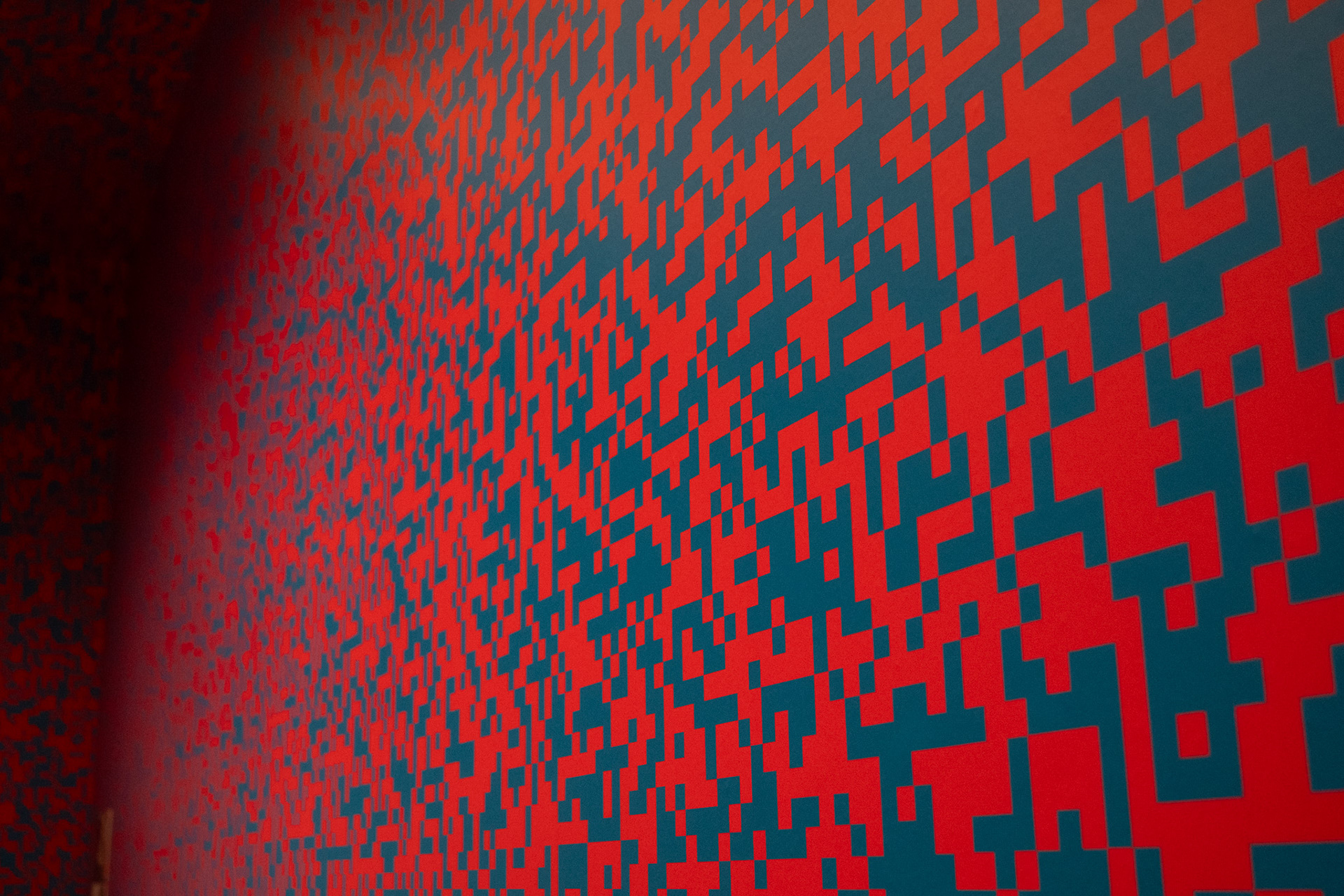
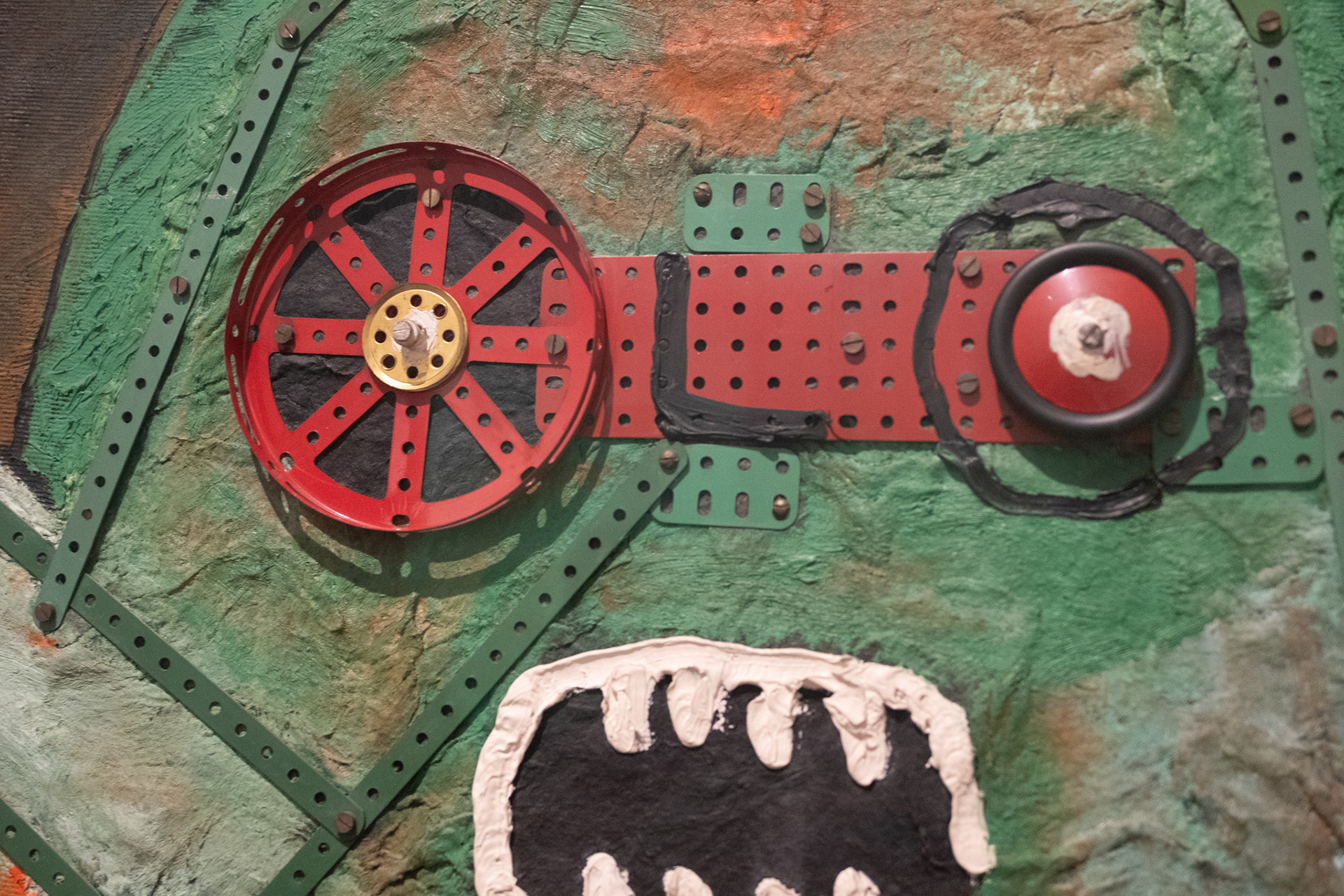
In the quiet, shadowy corners of the Tanks, I came across sculptures by Alberto Giacometti. His tall, fragile figures stood eerily in the darkness, their rough textures catching just enough light to reveal their form. It was a haunting yet beautiful moment—his work always carries a certain loneliness, and down in those echoing, dimly lit spaces, that feeling was amplified.
It felt like a hidden part of the gallery—less crowded, more intimate—and it gave me a quiet moment to reflect.
I was ready for a quick drink and lunch before meeting up with the Fine Art group outside. On my way out, I couldn’t resist popping into the Tate Modern shop and I picked up a Jean-Michel Basquiat pocketbook. It was a small blue book full of his vibrant energy— a perfect little reminder of the day.
I made my way upstairs to the Granville-Grossman Members Bar in the Natalie Bell building for a much-needed pause. I ordered a hazy Neipa beer and a classic ham and cheese sandwich—nothing fancy, but just what I was craving.
Sitting out on the balcony, I could see the whole London skyline laid out in front of me: St Paul’s, the Shard, the Millennium Bridge, the Sky Garden, all with the Thames flowing in front. It was one of those moments where you just stop, take a breath, and appreciate where you are.
It was the perfect way to relax after such a packed, inspiring day at the Tate Modern.
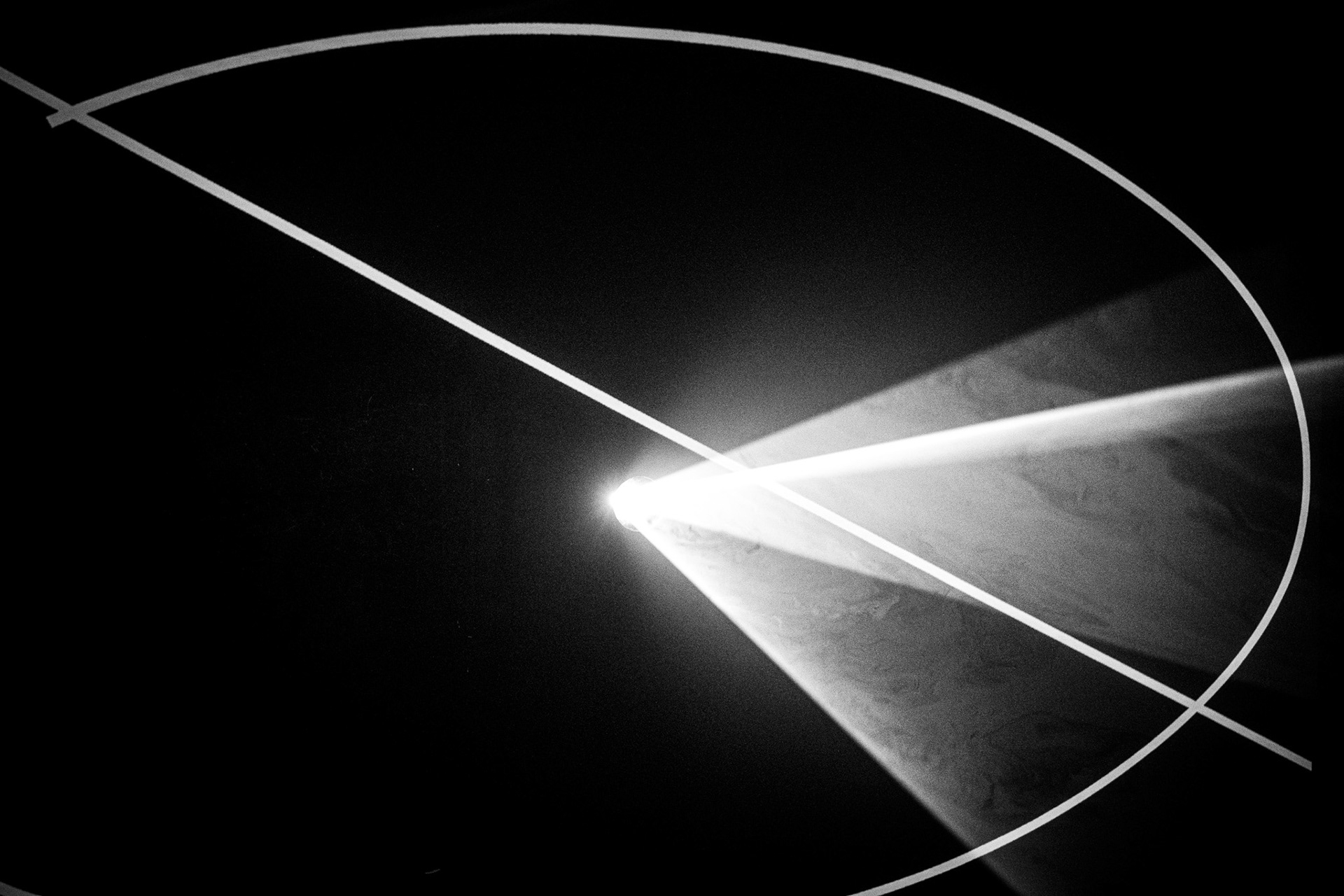
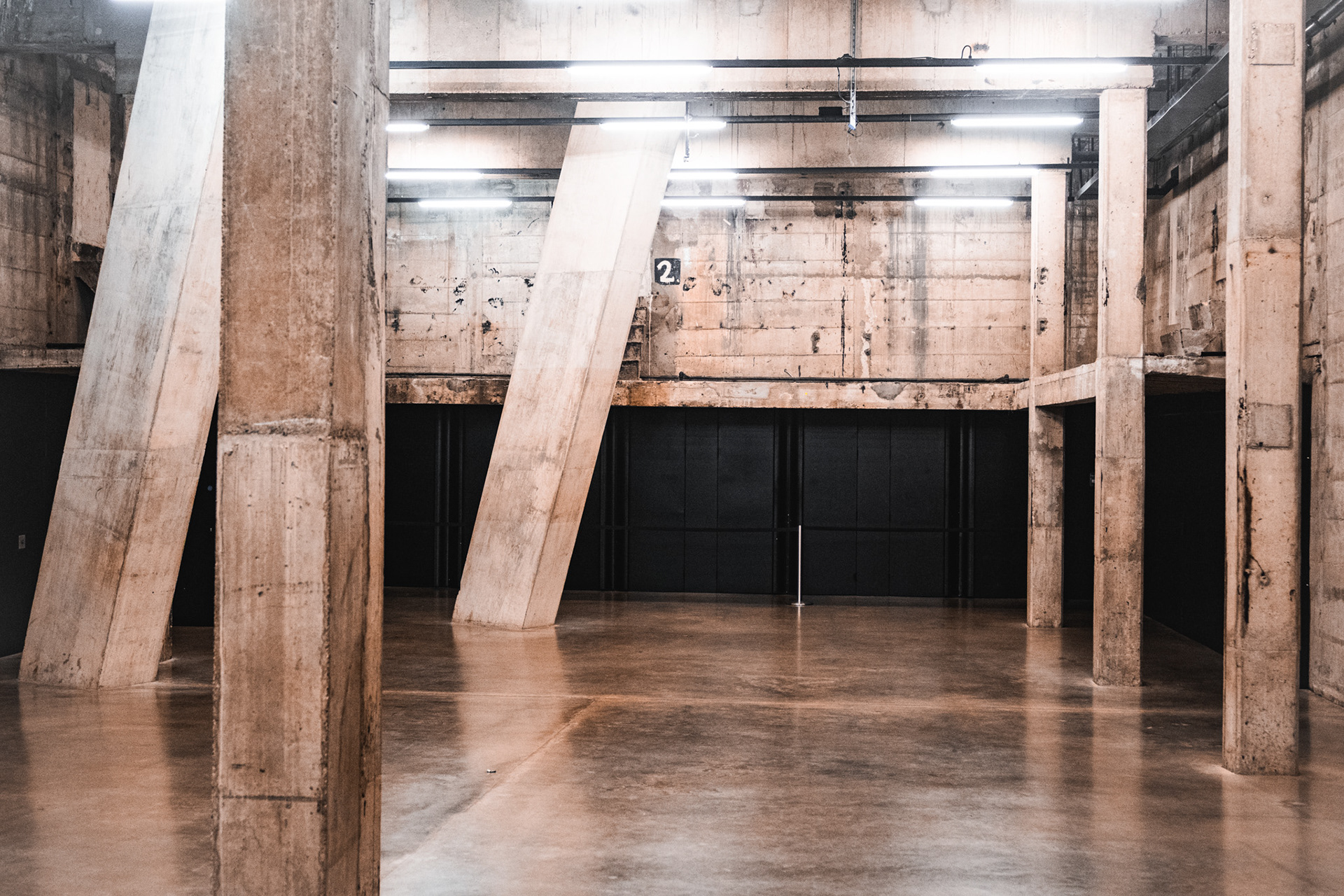
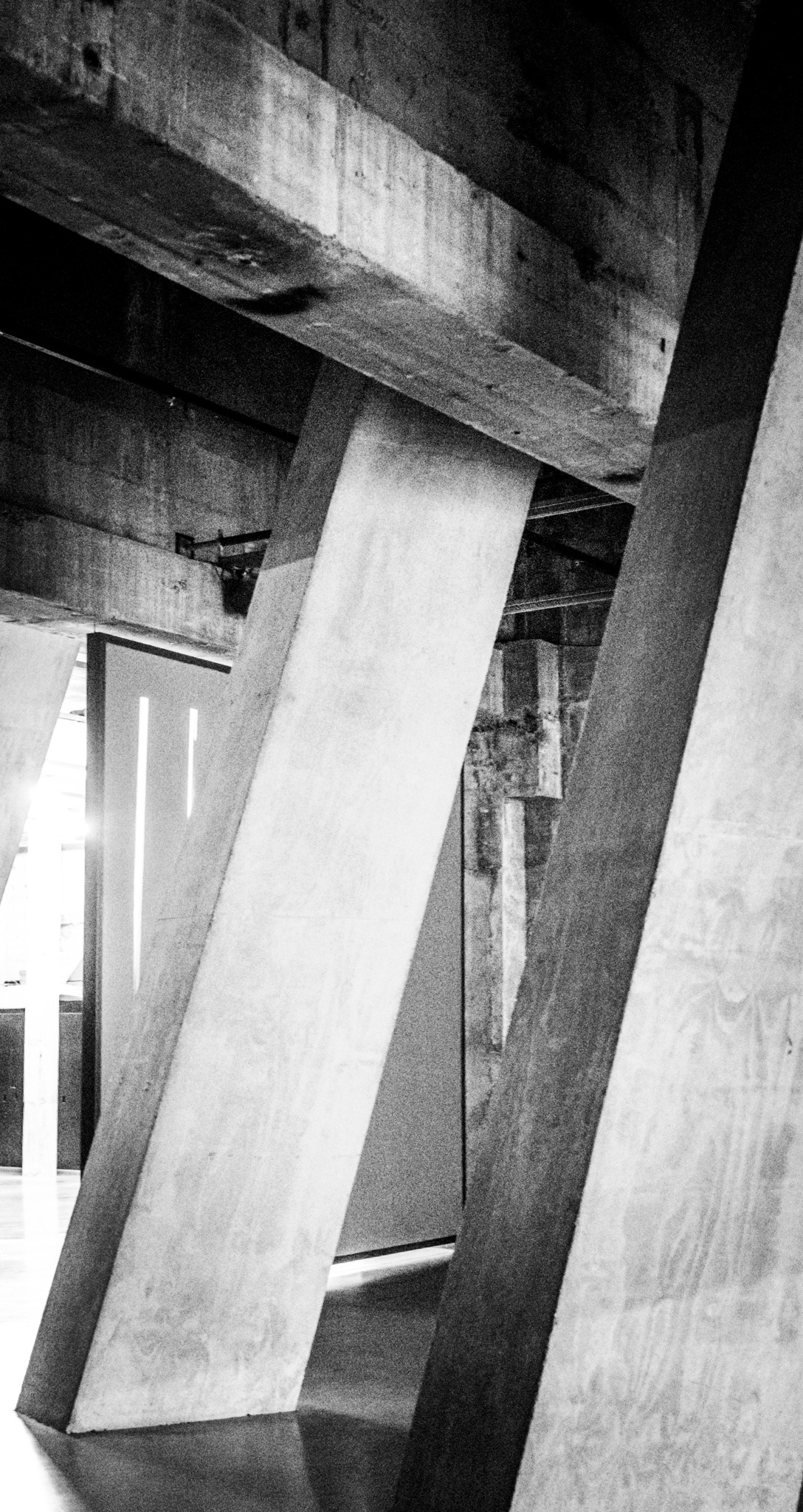
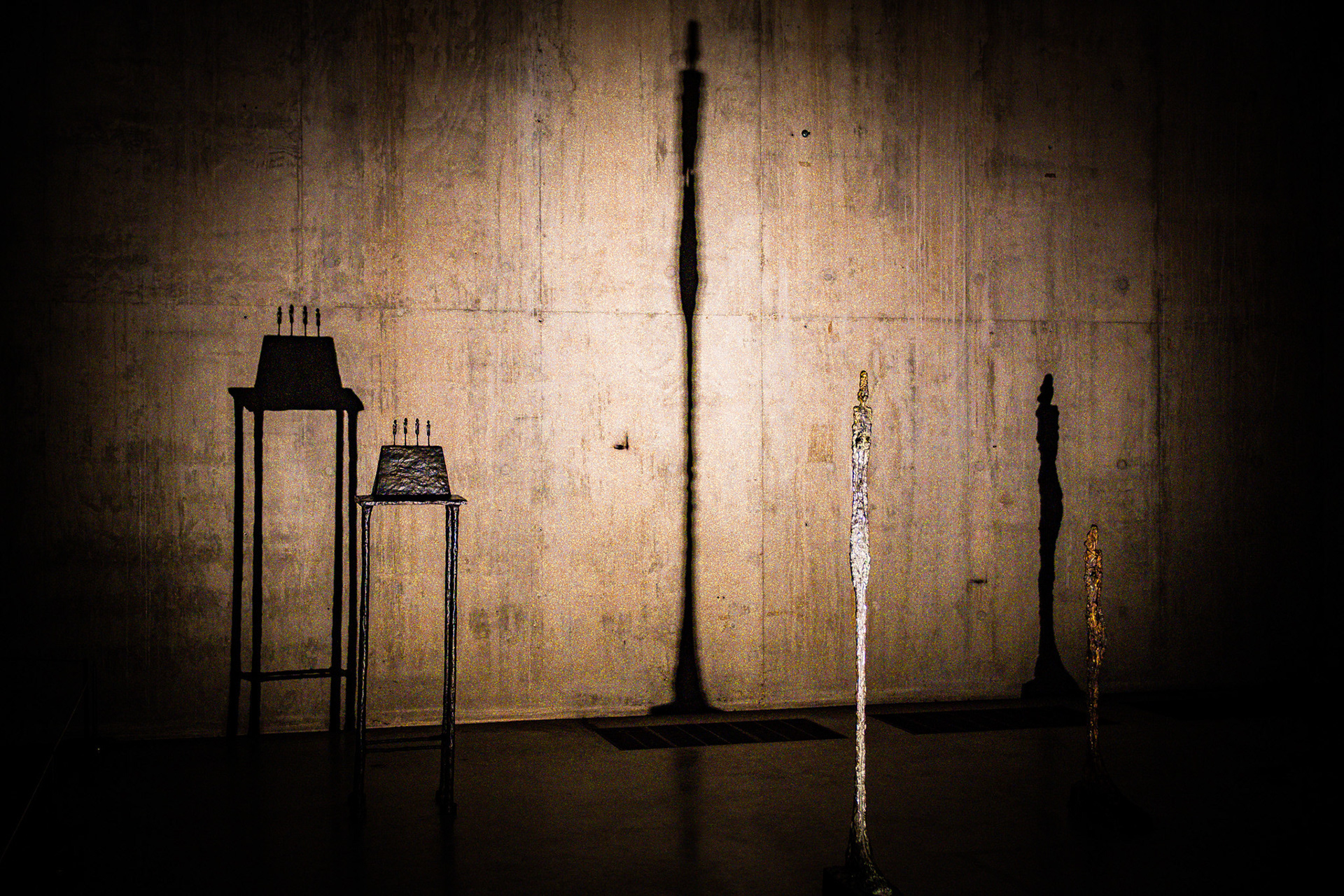
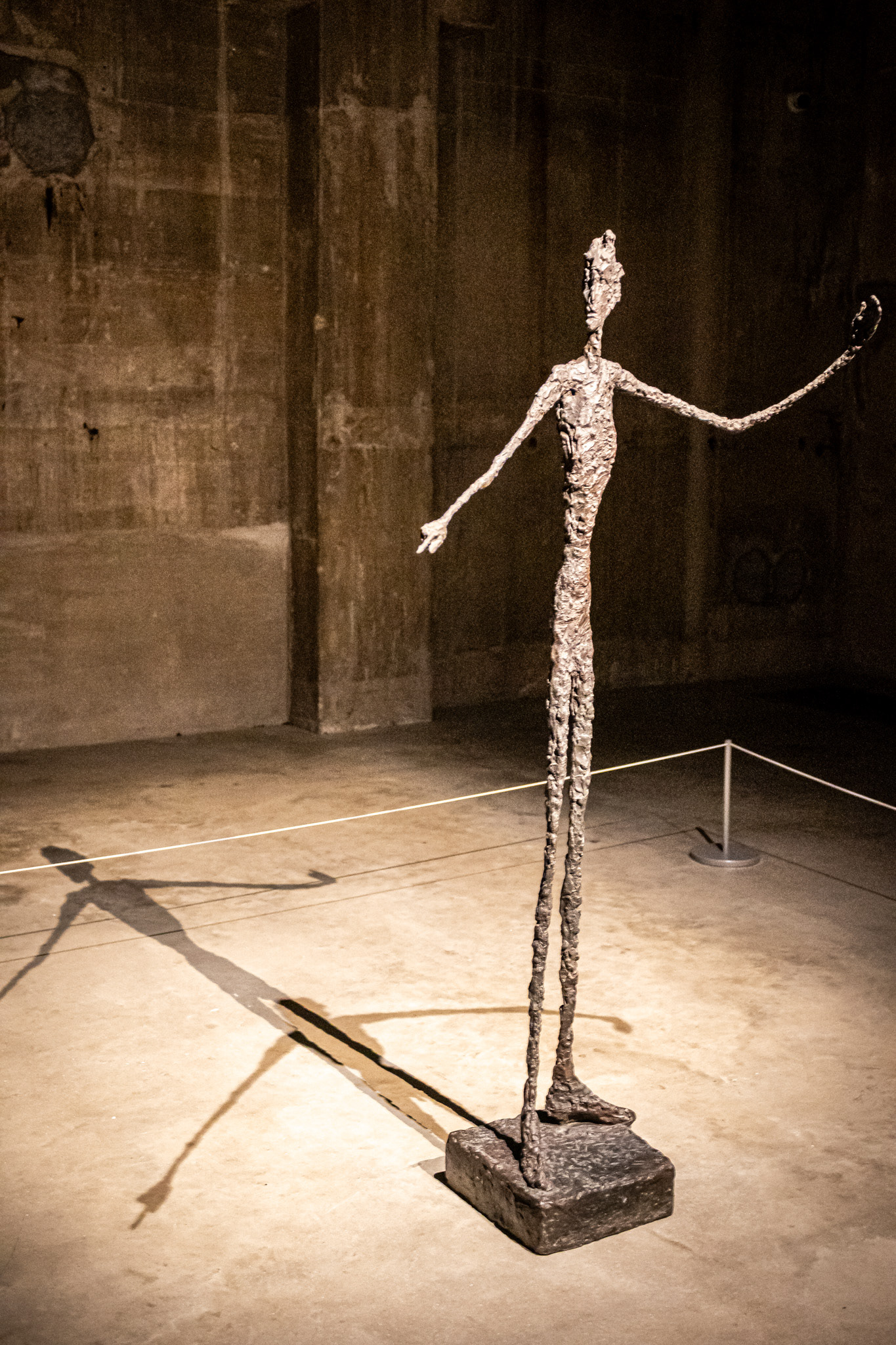
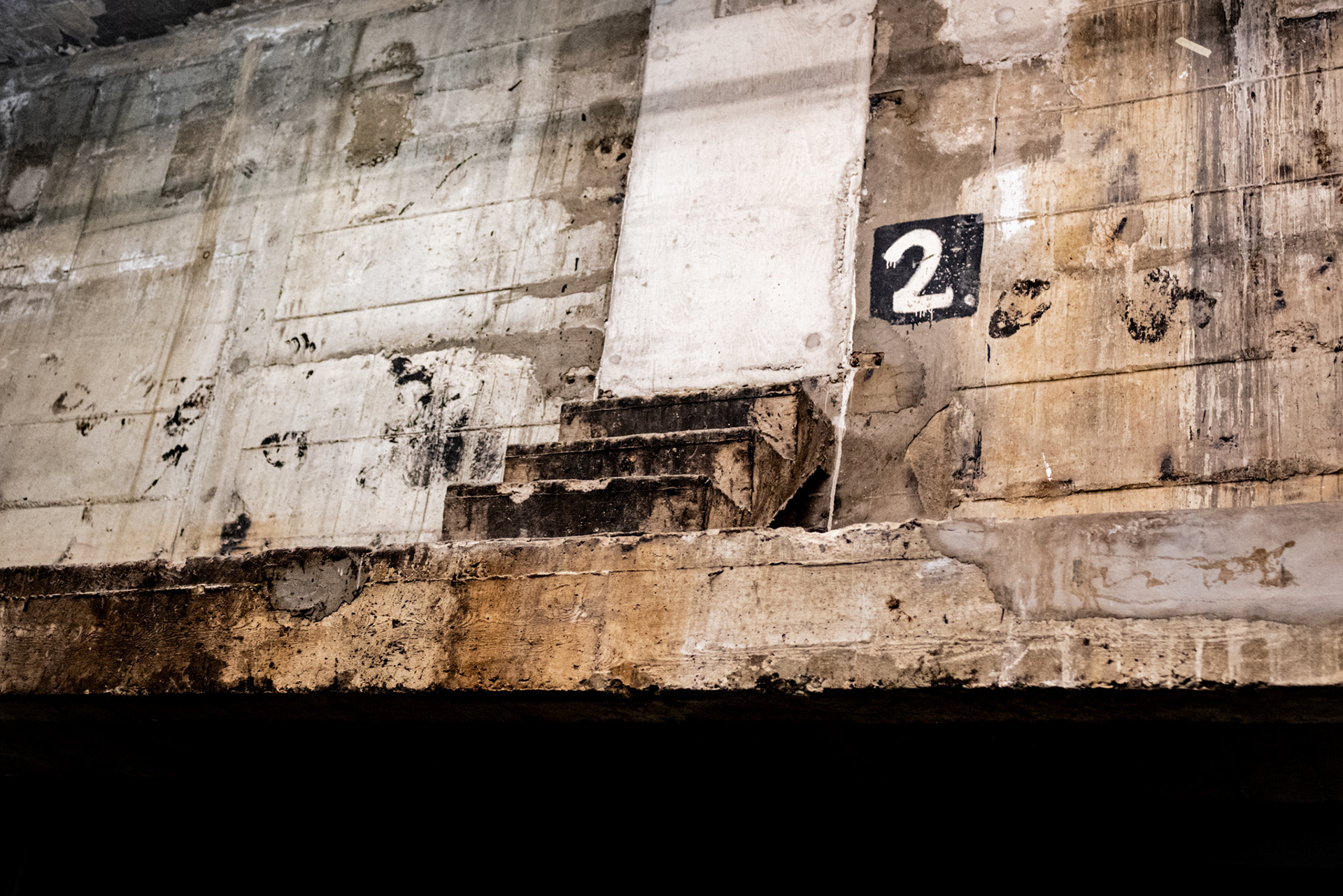
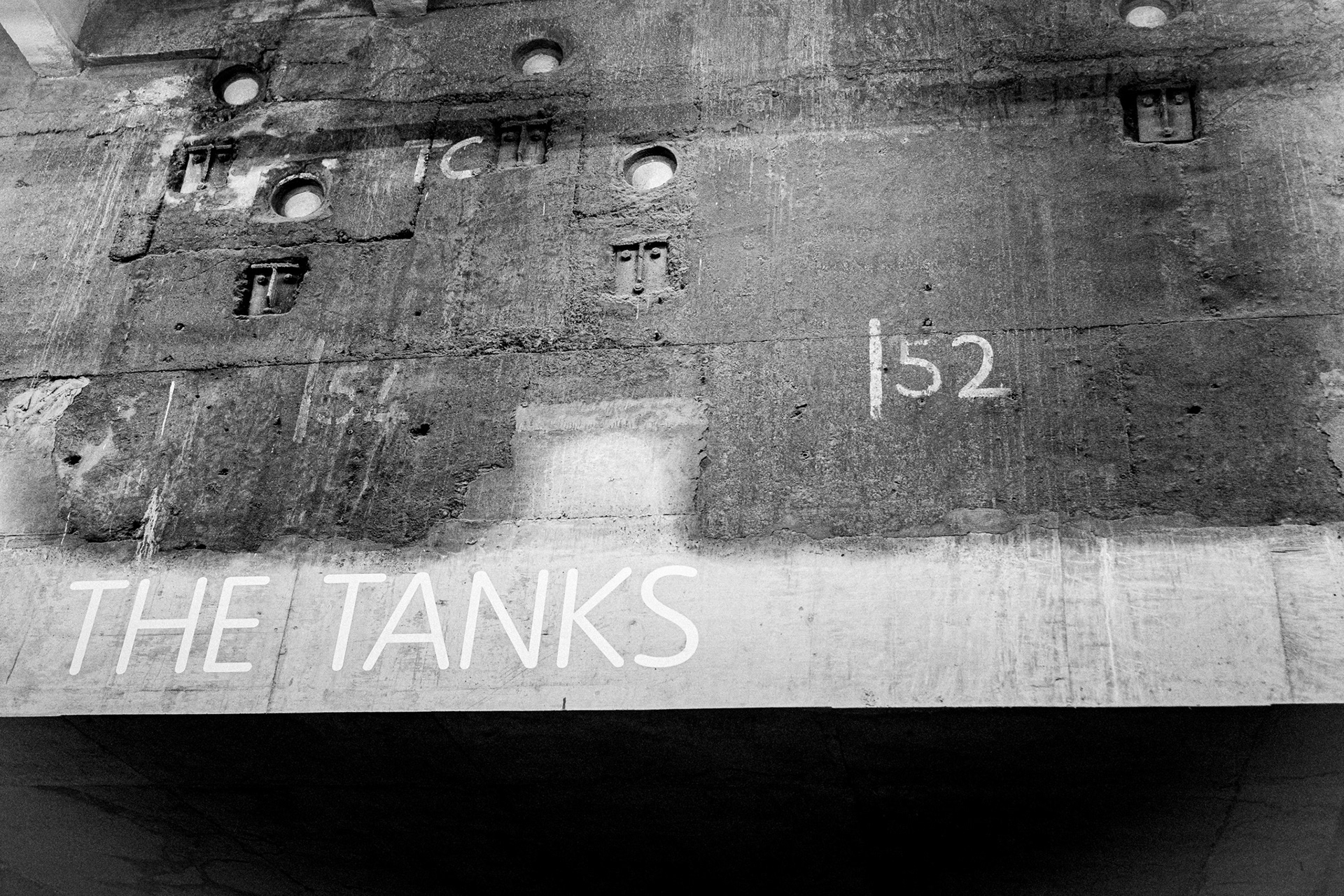
The Tate Britain
After a brief visit to the Tate Modern, we headed down to the Thames and caught a ferry to Pimlico—an enjoyable ride, made even better with a refreshing drink in hand ( it was also my wedding anniversary) Upon arrival, we all took a short walk to the Tate Britain, a gallery I had never been to before. I was looking forward to explore it for the first time.
Tate Britain is a major art gallery in London and it's a beautiful old building by the Thames. Tate Britain is one of the four museums in the Tate network of art galleries in the UK
It primarily houses a significant collection of British art from the 1500s to the present day. Some highlights include works by major artists like J.M.W. Turner, William Blake, John Constable, and contemporary British figures such as David Hockney and Francis Bacon and Tracey Emin.
It’s the kind of place where you can wander through centuries of British history and creativity, all in one visit.
Originally opened in 1897 as the National Gallery of British Art, it was later renamed Tate Britain to distinguish it from its sibling gallery, Tate Modern. It’s also home to the Turner Prize, a prestigious annual contemporary art award.
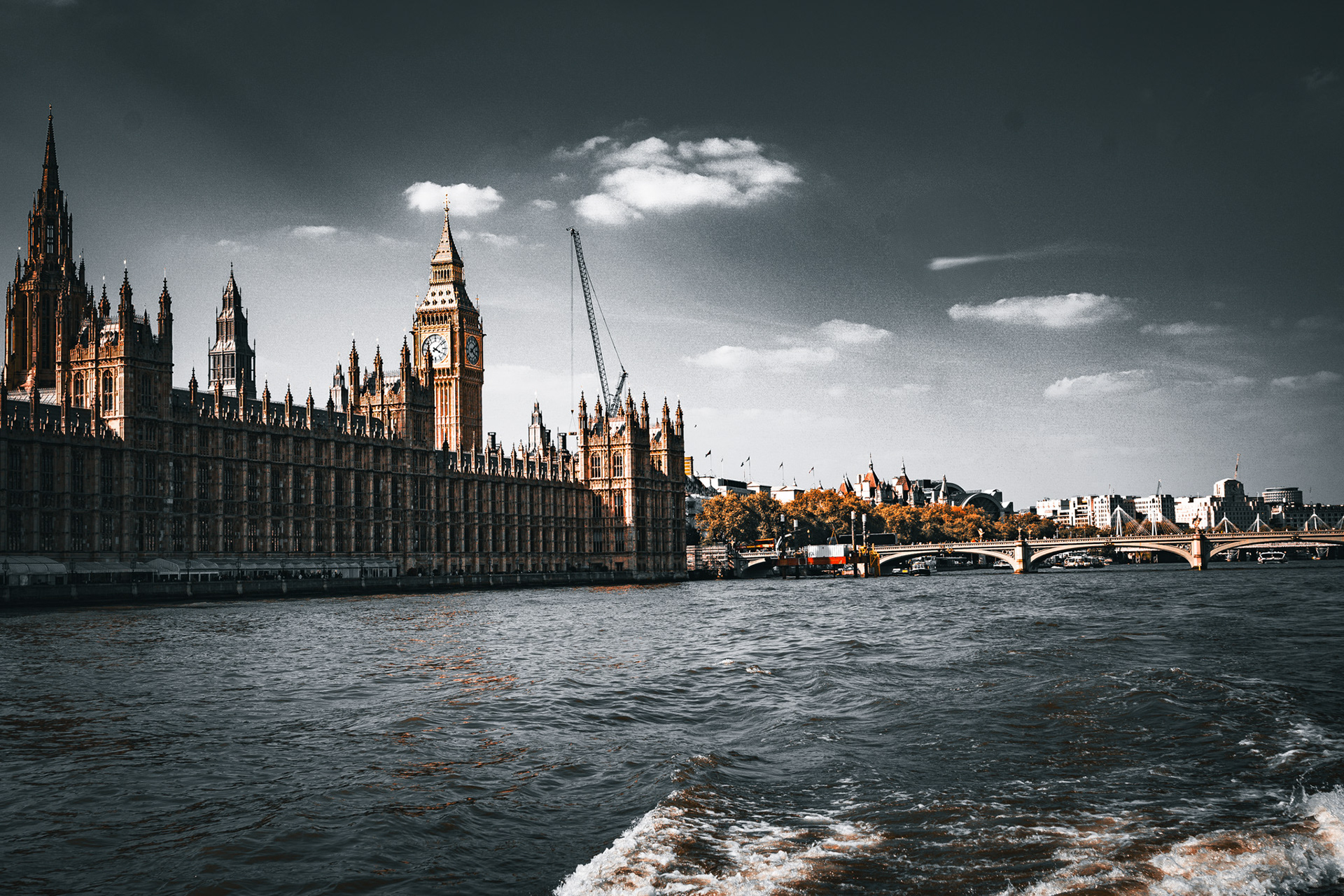
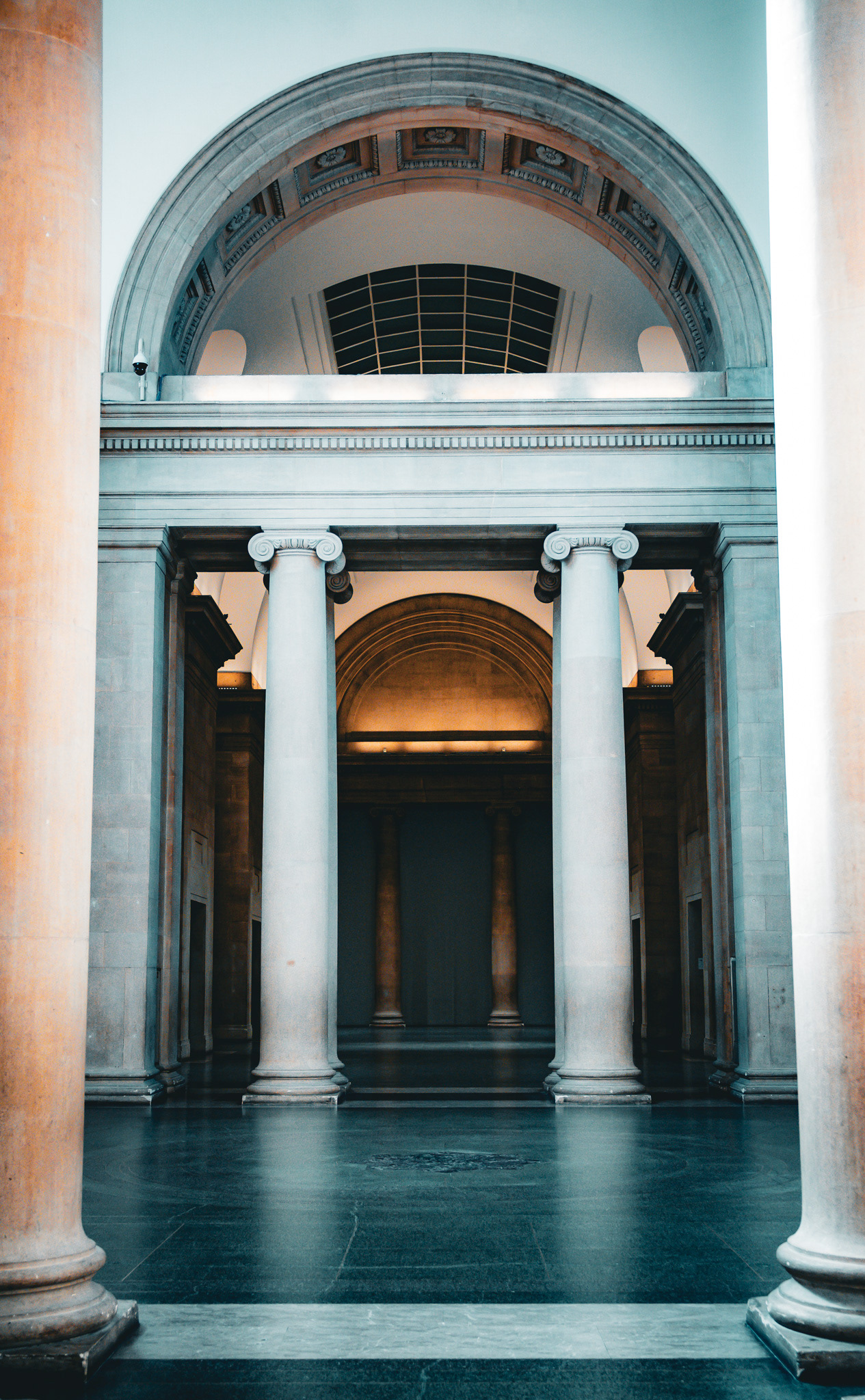
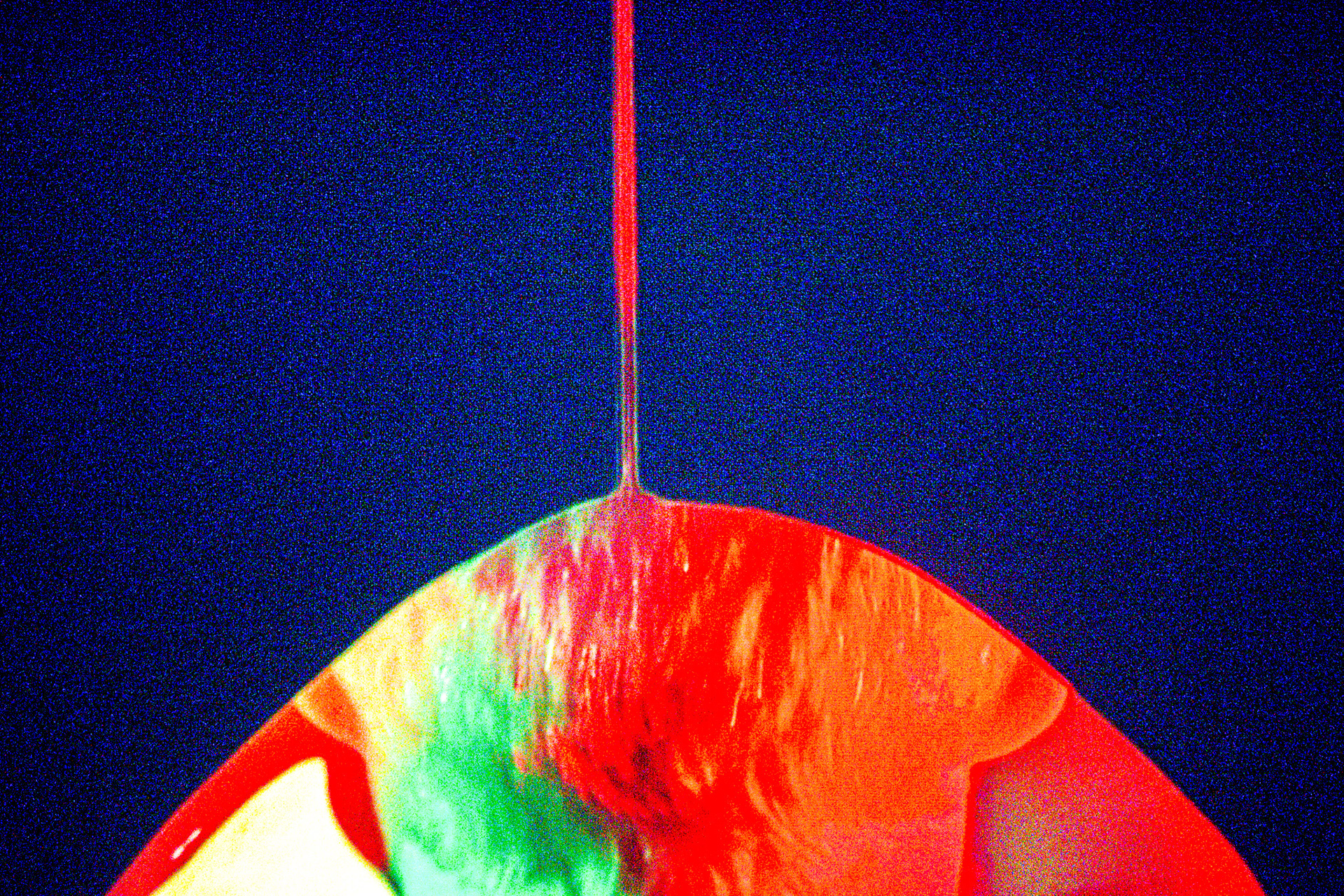
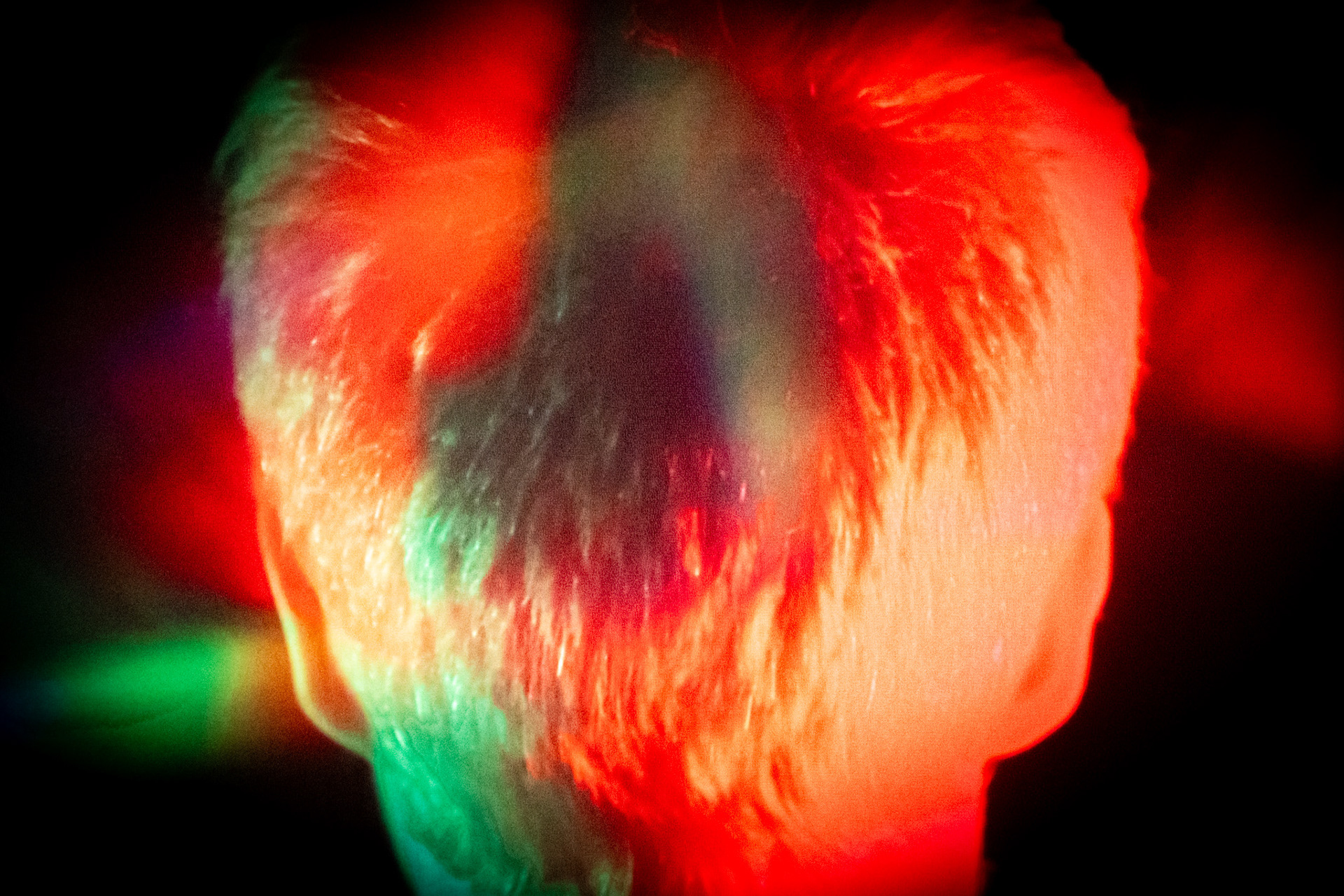
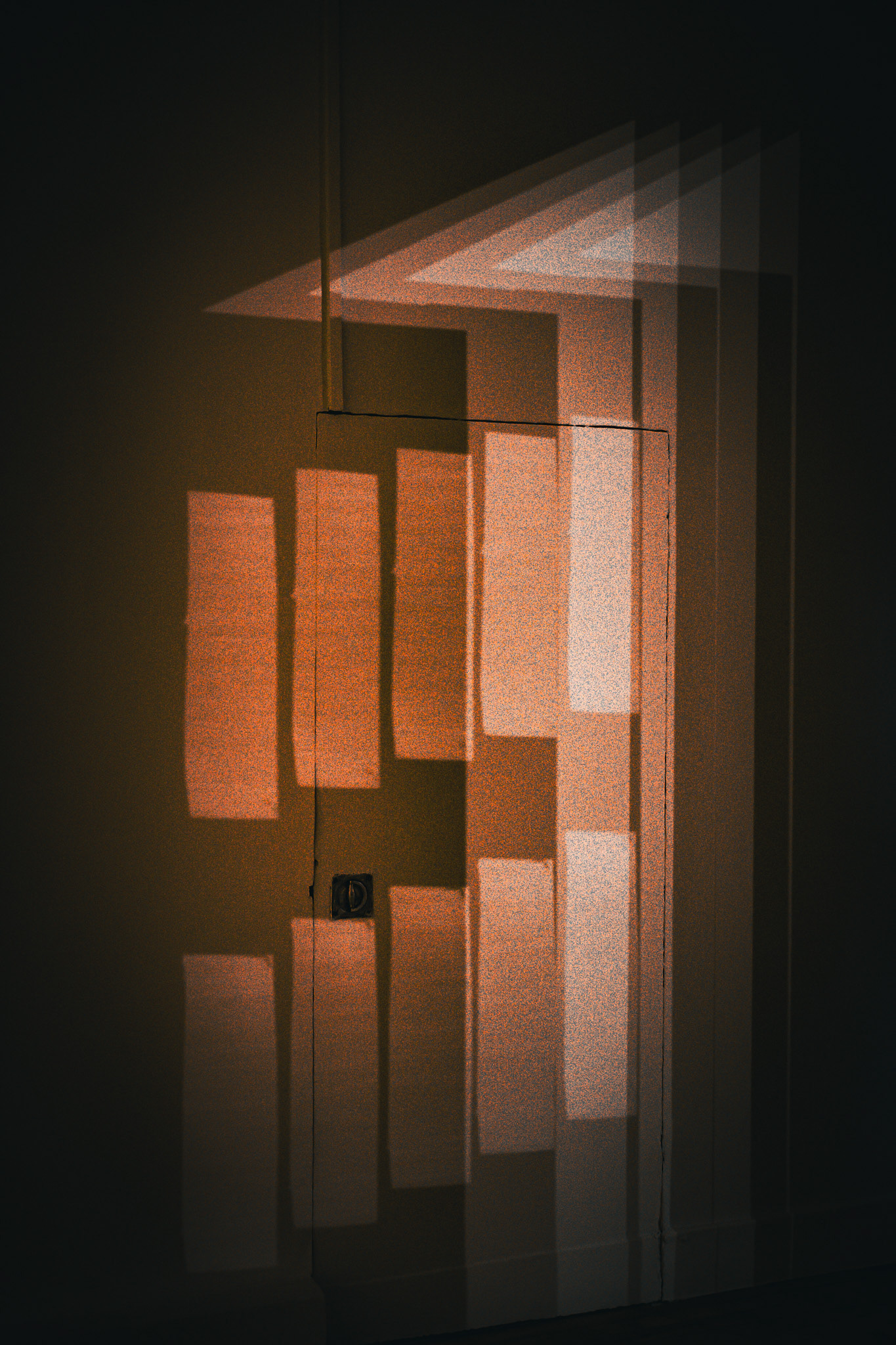
Walking into Tate Britain feels like stepping into another era—especially if you’ve just come from Tate Modern. The difference hits you right away. Instead of the raw, industrial vibe of the Modern, Tate Britain greets you with grand staircases, high ceilings, and big, open halls that feel almost palatial. There's something quiet and reflective about the space, like it’s inviting you to slow down and take your time.
It has that old-world charm—classical columns, soft light, a sense of history in the walls. You feel it in the way the paintings hang, in how sound echoes just a little differently. It's not better or worse, just completely different. If Tate Modern is bold and edgy, Tate Britain feels grounded and calm. Both are incredible in their own way, but Tate Britain reminds you that art doesn’t have to shout to leave an impression.
I really enjoyed walking around Tate Britain — there’s something special about the space itself, with its calm, classical atmosphere that makes you want to slow down and take it all in. One of the highlights for me was Dan Atkins' exhibition. I could’ve easily spent much longer there, just sitting with the work, but we were on a tight schedule.
Henry Moore’s sculptures were a real inspiration — powerful and grounding in a way that photos never quite capture. It was also a nice surprise to come across a piece by Gilbert & George, and seeing Gillian Wearing’s work in person was another standout moment.
The whole visit ended up being incredibly helpful for the module I’m working on for Helen Jones — it gave me a lot to think about and definitely added some depth to what I’ve been researching.
